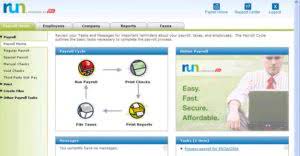What Changes in Working Capital Impact Cash Flow?

The more working capital a company has, the less likely it is to take on debt to fund the growth trial balance of its business. The exact working capital figure can change every day depending on the nature of a company’s debt. What was once a long-term liability, such as a 10-year loan, becomes a current liability in the ninth year, when the repayment deadline is less than a year away. Net working capital is important because it gives an idea of a business’s liquidity and whether the company has enough money to cover its short-term obligations. If the net working capital figure is zero or greater, the business is able to cover its current obligations.

Accounts Receivable May Be Written Off
A company with positive working capital generally has the potential to invest in growth and expansion. But if current assets don’t exceed current liabilities, the company has negative working capital, and may face difficulties in growth, paying back creditors, or even avoiding bankruptcy. Keep in mind that a negative number is worse than a positive one, but it doesn’t necessarily mean that the company is going to go under. For example, a positive WC might not really mean much if the company can’t convert its inventory or receivables to cash in a short period of time.
Is Negative Working Capital Bad?
- Around half of ESA claimants will receive more financial support on UC, while others will receive transitional protection to ensure nobody is worse off at the point at which they move over to UC.
- These changes will provide greater certainty for departments, investors and supply chains, and greater assurance that investment achieves value for money, is well delivered and supports growth.
- The amount of working capital needed varies by industry, company size, and risk profile.
- Change in net working capital refers to the differences in the liquidity of the company.
- Compensation payments for victims of the Post Office Horizon IT and Infected Blood scandals had also not been fully accounted for.
- Secondary Class 1 NICs (Employer NICs) – The government will increase the rate of employer NICs from 13.8% to 15% from 6 April 2025.
The OBR judges that the Budget package as a whole will both crowd-in private investment (via increased public investment as set out in Box 1.E) and crowd‑out private investment, as higher government spending is offset in the short term by lower private sector activity. In addition, compensation payments for victims of the Infected Blood and Post Office Horizon IT scandals had not been fully accounted for by the previous government and will cost an average of £2.3 billion a year over the next forecast period. This includes investing in transport, kickstarting the delivery of 1.5 million homes, supporting new industries and job creation, and protecting record R&D funding. The Budget also increases investment in public services, recognising that a well-functioning NHS and education system are critical to the economy.
Change in Net Working Capital (NWC) Explained
The government is also providing £6.7 billion of capital funding in 2025‑26 for education in England, a real terms increase of 19% from 2024‑25. This includes £1.4 billion for the school rebuilding programme, an increase of £550 million on this year. The settlement also invests over £2 billion into maintenance for schools and £950 million for skills capital. The UK economy has faced unprecedented shocks, including the pandemic and Russia’s illegal invasion of Ukraine, which contributed to the largest increase in inflation in almost 50 years. External shocks have been exacerbated by UK-specific factors, resulting in elevated levels of domestic policy uncertainty that have far outstripped global trends.
How comfortable are you with investing?
This is in line with best practice fiscal management as these liabilities are not all included in debt metrics. PSND does not include any contingent liabilities, while net financial debt does include the value of standardised guarantees. There have been two new material contingent liabilities taken on since the last update at Spring Budget 2024 with £282 million of total exposure and £86 million of net expected loss. These are the government’s ENABLE build and the Private Rental Sector Guarantee Scheme. General government gross debt (GGGD) is the most used metric for international comparisons, allowing the government to compare the UK’s debt to that of its peers. The IMF forecasts that UK general government gross debt will be 101.8% of GDP in 2024, lower than that of all G7 peers other than Germany.footnote 52 GGGD includes only liabilities held by central and local governments.
Advance Payment of Income Tax

Investors use NWC to know whether a company is liquid enough to pay off its short-term liabilities. If you look at current assets and current liabilities, you will find them on the balance sheet. A statement of changes in working capital is prepared to measure the increase or decrease in the individual items of current assets and current liabilities. It also shows the net increase or decrease in the working capital during the accounting period.

Everything You Need To Know About Automated Treasury Management

The main rates of CGT are currently charged at a lower rate of 10% and a higher rate of 20%, and these will be increased to 18% and 24% respectively from 30 October 2024. The government recognises the economic and cultural importance of British pubs, and is committed to supporting smaller brewers. The Budget is therefore reducing duty on qualifying draught products, which represent approximately 60% of alcoholic drinks sold in pubs.footnote 78 This measure reduces duty bills by over £85 million a year, cutting duty on an average strength pint by a penny. To support small producers, the government change in net working capital will make the Small Producer Relief more valuable. The government will also consult on ways to encourage small brewers to retain and expand their access to UK pubs, maximising drinkers’ choice and local economies, including through provisions to enable more ‘guest beers’. The government will transparently report any new commitments that may result in future costs, known as contingent liabilities.
Tax and working people
Finance Strategists is a leading financial education organization that connects people with financial professionals, priding itself on providing accurate and reliable financial information to millions of readers each year. The difference between the two sides is debited to the profit and loss adjustment account to determine funds from operations. However, a proposed dividend is preferably treated as a non-current liability, and it is not shown in the statement of changes in working capital. To calculate funds from operation, the difference between the closing and opening balances of provision for bad debts shall be taken into account. However, income tax departments insist that tax should be paid during the previous year itself on the estimated income to be earned on the principle of pay as you earn. Income tax is payable on the income of the previous year during the assessment year.
Cash Flow
Change in net working capital is an important indicator of a company’s financial performance and liquidity over time. By calculating the change in working capital, you can better understand your company’s capital cycle and strategize ways to reduce it, either by collecting receivables sooner or, possibly, by delaying accounts payable. The change in working capital formula is straightforward once you know your balance sheet. A company’s collection policy is a written document that includes the protocol for tackling owed debts. Cash comes in sooner (and total accounts receivable shrinks) when there is a short window within which customers can hold off on paying.
Uloženo dne 6.10.2021.
Rubrika Bookkeeping.
Komentářů: 0.


